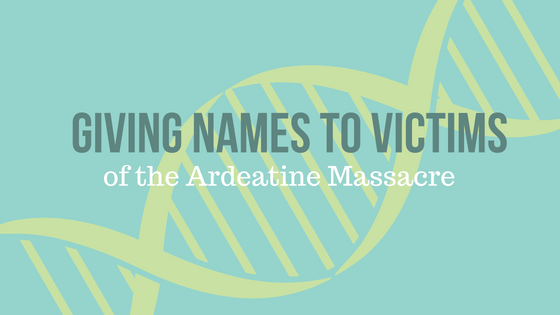On the outskirts of Rome, Italy lies Fosse Ardeatine (the Ardeatine Caves). If you were to visit on March 24th, you’d hear a role call of 335 names being called out to remember those who were brutally executed at this site by the Nazis in 1944 during the Ardeatine Massacre.
On March 23, 1944, 16 Italian resistance fighters attacked a troop of Nazi soldiers in Rome by detonating a makeshift bomb in the narrow streets. The blast of the bomb killed 28 SS policemen immediately, with an additional 7 passing over the next few days. While all the resistance fighters escaped by melting into the crowd during the chaos, German commanders Herbert Kappler and Kurt Mälzer felt that the killings demanded reprisals. After conferring with Adolf Hitler, it was decided that 10 Italians would be executed for each German policeman who had perished. Mistakenly, 335 Italian prisoners were put to death on March 24, 1944; their bodies sealed inside the Ardeatine Caves under tons of rock once explosives were set to conceal the atrocity.
written by: Tara luther, Promega
After the war ended, the caves were excavated, and the bodies were individually buried. All but 12 of the victims were identified. In 2009, the Ministry of Defense led a multidisciplinary team including anthropologists and forensic genetic experts with the goal of putting a name to the remaining 12 victims.
Elena Pilli of the University of Florence, and her colleagues at the Carabinieri Scientific Investigation Department recently published their work on how they went about identifying the unknown. Their work involved several steps:
- Photographic documentation during the investigation
- Exhumation of the bodies
- Collecting and cataloguing everything found within the graves
- Analysis of DNA extracted from the victims’ bones (Pilli et al analyzed Y-STRs, mtDNA, and autosomal DNA)
- Research was conducted on the immediate and/or closest relatives of the unidentified victims to gather reference samples
After STR profiles were obtained from the bone samples, the team compared the samples to known reference samples to estimate familiar relationships. Historical information provided by the National Association of Italian Families Martyrs (ANFIM), allowed the team to be able to obtain the alleged names of 10 of the victims, confirmation that all the victims were male, alleged age at death, and stature for 10 of the victims.
At the time of the study, 4 out of the 10 ‘known’ families had been traced and their DNA collected for identification purposes. Later, another 7 families donated their DNA for comparative analysis, after learning of the investigation.
When performing the DNA analysis on the bone samples taken from the victims, Pilli’s team was able to generate complete autosomal STR profiles of all available reference samples. Comparative analysis between bone and relative profiles established three likely relationships. Of those who had donated their samples for comparison, one woman identified her father, one man found his brother, and a couple of men had identified their father/uncle.
Pilli and her team note that since all anthropological and genetic activities were carried out between 2010 and 2012, the newer quantification and multiplex kits now available were not able to be used. They also mention that new research suggesting using the petrous bone could have increased the potential for analytical success. At this point, the identification activity of the remains at the Mausoleum of Fosse Ardeatine has been completed, but they would be interested to use all newer technologies currently available, such as MPS if identification activities were resumed.
WOULD YOU LIKE TO SEE MORE ARTICLES LIKE THIS? SUBSCRIBE TO THE ISHI BLOG BELOW!


